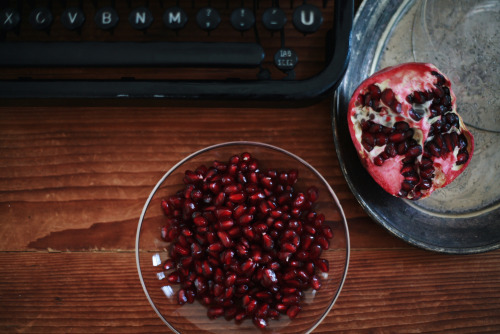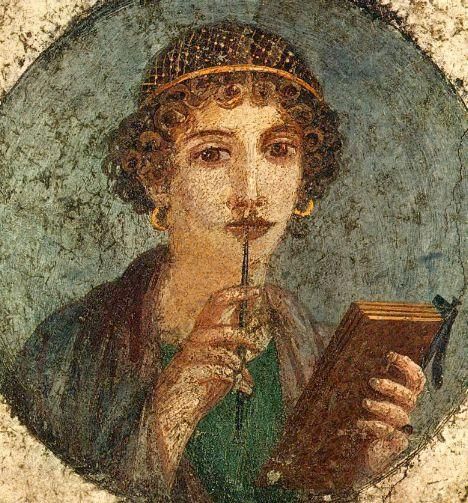Rachel Alexander's Blog, page 413
April 6, 2016
madamesommersprosse:
Pomegranate
Will the story of Dionysus and Ariadne feature in your books ?
Yes.
coloricioso:
“Persephone smiled wryly. Draped down the front...

“Persephone smiled wryly. Draped down the front of her clothes were more jewels than the oldest, richest dynasty could hope to acquire in all its generations, much less a single mortal in a short lifetime. Any one of the rubies in her hair could ransom a princess.” - Destroyer of Light
♥ (◡‿◡✿) aww yisss, a pretty fan art card of Receiver of Many! @kata-chthonia this is totally inspired in your beautiful looks and hair :3 ♥ ! hope that you like it!
artielu:
ok i think i figured out a big part of the reason i am so annoyed with 5b and hades.this...
ok i think i figured out a big part of the reason i am so annoyed with 5b and hades.
this version of hades… i’m jealous of my brother who got everything when i didnt, it’s not fair… is not a twist on a classic. this is straight up stereotypical hades.
and now he loves zelena.
which is just insane to me because hades x persephone is such an incredible otp.
especially when written by @kata-chthonia in her now published epic fic Receiver of Many, Destroyer of Light, part three to be published soon. I am a very proud Kickstarter of her fantastic fic, which I paid actual cash money to support. And you all (who are over 18) should buy it because it is FANTASTIC. This fic shows how the epic otp romance of Hades x Persephone is not the “I’m jealous of my brother,boo i hate the underworld it’s the worst, I’m going to kidnap and rape this girl” plotline we are familiar with, and is much closer to how the ancient greeks apparently viewed both of them and their relationship.
This OUAT Hades… is not a twist. And it sure as hell doesn’t rival Receiver of Many.
But y’all should go buy Receiver of Many. For realsies.
I’m going to continue to be grumpy about OUAT.
art-of-coloricioso:
ABOUT ME: My name is Coni Gomez, I’m 26, I live in Chile.I love drawing and...
:
ABOUT ME: My name is Coni Gomez, I’m 26, I live in Chile.
I love drawing and painting, along with writing. I’m also a lover of Greek Mythology, specially of Hades and Persephone.
You can see more of my work in my mainblog
SHIPPING INFO: price is 3 USD. Your order should arrive within 2-3 weeks. It is sent by airmail.
OTHERS: if a product is out of stock, don’t worry, ask and I’ll print more :)
Go support @coloricioso
April 5, 2016
coloricioso:
“Persephone smiled wryly. Draped down the front...

“Persephone smiled wryly. Draped down the front of her clothes were more jewels than the oldest, richest dynasty could hope to acquire in all its generations, much less a single mortal in a short lifetime. Any one of the rubies in her hair could ransom a princess.” - Destroyer of Light
♥ (◡‿◡✿) aww yisss, a pretty fan art card of Receiver of Many! @kata-chthonia this is totally inspired in your beautiful looks and hair :3 ♥ ! hope that you like it!
welcometoitalia:
“Sappho”- Roman wall painting, 50 C.E.,...
April 4, 2016
hildegardavon:
Carl Rahl, 1812-1905
Orestes chased by the...
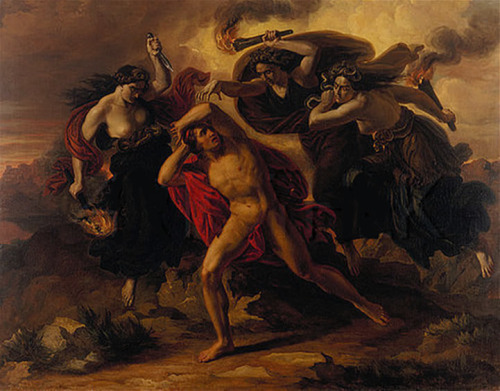
Carl Rahl, 1812-1905
Orestes chased by the Erinyes, ca.1852, oil on canvas
Augusteum, Oldenburg
Cast Hate Upon Thee! Curse Tablets Uncovered in Greece
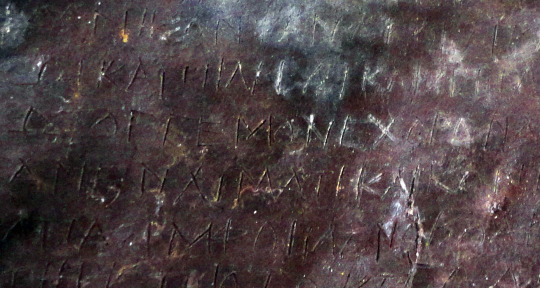
Five lead tablets that cursed tavern keepers some 2,400 years ago have been discovered in a young woman’s grave in Athens, Greece.
Four of the tablets were engraved with curses that invoked the names of “chthonic” (underworld) gods, asking them to target four different husband-and-wife tavern keepers in Athens. The fifth tablet was blank and likely had a spell or incantation recited orally, the words spoken over it.
All five tablets were pierced with an iron nail, folded and deposited in the grave. The grave would have provided the tablets a path to such gods, who would then do the curses’ biddings, according to ancient beliefs.
One of the curses targeted husband-and-wife tavern keepers named Demetrios and Phanagora. The curse targeting them reads in part (translated from Greek):
“Cast your hate upon Phanagora and Demetrios and their tavern and their property and their possessions. I will bind my enemy Demetrios, and Phanagora, in blood and in ashes, with all the dead…” Read more.
April 3, 2016
britishmuseum:
Most Greek sculpture that survives from
antiquity is carved from white marble, of...

Most Greek sculpture that survives from
antiquity is carved from white marble, of which the Mediterranean has many
natural sources. A relationship has often been assumed between the pure white
of freshly cut marble and the idealism of Greek art. In fact, the opposite is
true. Colour was intrinsic to ancient ideas of beauty. For centuries this has
been a subject of fascination and controversy. The great Italian Renaissance
sculptor Michelangelo revived the Greek idea of the human body but denied the
use of colour. This was partly due to negative associations with the painted
saints of the medieval period. During the European Enlightenment of the 1750s
onwards, and increasingly into our own time, the preferred aesthetic was a truth
to materials. Painting and gilding were seen
as unnecessary and undesirable.

In antiquity, colour served to make the
subject seem more alive. In the case of gravestones, it rendered the memorial
of the deceased more conspicuous. This cast reconstructs a grave marker
for the Athenian warrior Aristion, following the many traces of colour evident
through scientific investigation. His armour is intricately decorated with
images to evoke fear, including a lion’s head. These
coloured motifs were first etched into the stone to prevent the liquid paint
from flowing beyond the incisions.
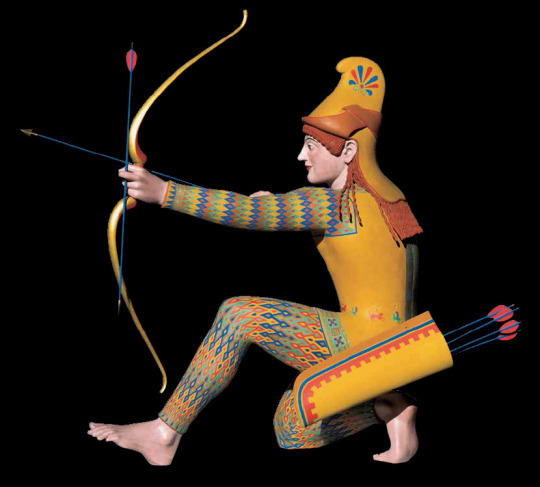
Sculpture in antiquity was often adorned not
only with colour but also with different materials. The Greek marble statue of
an archer reconstructed here was drilled and fitted with metal attachments. The
figure originally held a bronze bow and arrow and a quiver was fixed to his left hip by a metal dowel.
Individual locks of hair were made of lead. The colourful design of the man’s
knitted all-in-one garment, often worn by peoples from the east, is clearly seen weathered into the marble
surface under controlled lighting.
Conservation scientist Giovanni Verri and
curator Ian Jenkins talk about the discovery of ancient colour in
this video
You can see these objects in our
exhibition Defining beauty: the body in
ancient Greek art (26 March – 5 July 2015).
You can also find out more about the
exhibition in the catalogue by Ian Jenkins.

